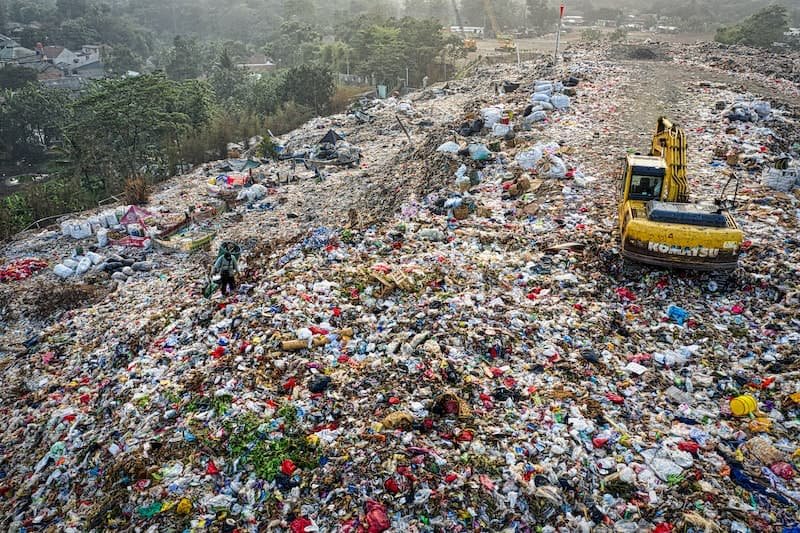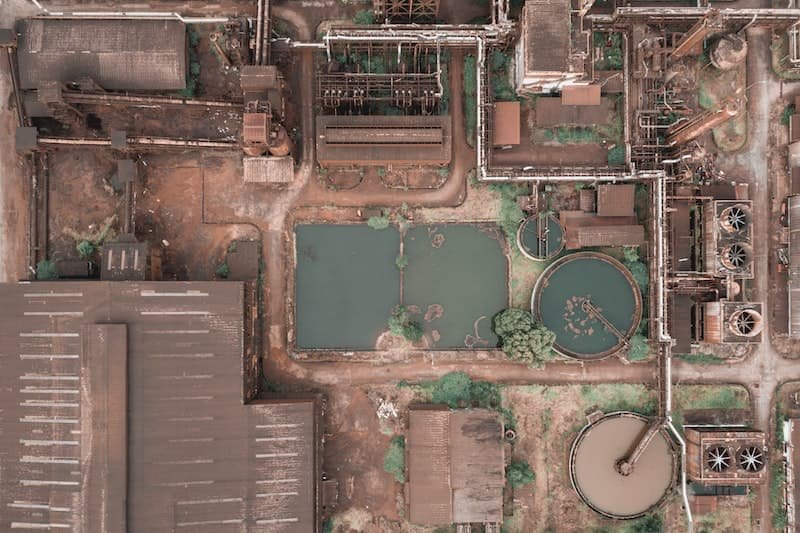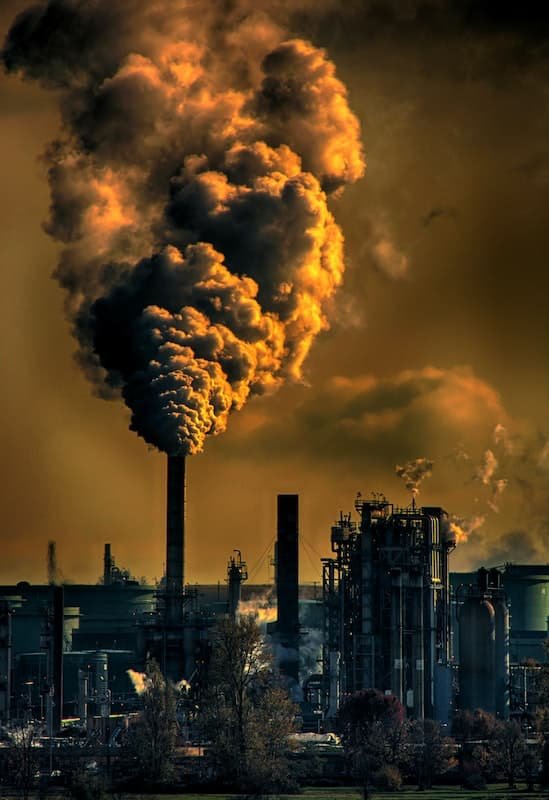
 Olivia Møller
Freediver - Activist - Explorer
Olivia Møller
Freediver - Activist - Explorer

 Olivia Møller
Freediver - Activist - Explorer
Olivia Møller
Freediver - Activist - Explorer
In today's rapidly evolving world, we are constantly exposed to an array of chemicals in our daily lives. Some of these chemicals are relatively harmless, while others pose a significant threat to both our health and the environment. Among the latter group, a particularly insidious class of substances has emerged – "forever chemicals." These persistent organic pollutants, or POPs, have earned their ominous nickname due to their astounding resistance to degradation. In this blog post, we will look into the dangers of "forever chemicals," exploring their origins, the science behind their persistence, and their profound impacts on our health and the environment.
Forever chemicals, scientifically known as per- and polyfluoroalkyl substances (PFAS), have garnered increasing attention in recent years. PFAS are a group of synthetic chemicals characterized by their unique molecular structure, which consists of fluorine atoms bound to carbon chains. This distinctive arrangement grants them extraordinary resistance to degradation, earning them a prominent place on the list of the world's most persistent environmental contaminants.
PFAS were first synthesized in the mid-20th century, with their unique properties making them valuable in various industrial applications. The development of PFAS stemmed from the need for materials that could resist extreme conditions, including high temperatures and exposure to chemicals. PFAS quickly found their way into a wide range of products, from firefighting foams and non-stick cookware to waterproof textiles and food packaging materials. The extensive use of PFAS in these products has led to their widespread presence in the environment, making them a global concern.
The rise of PFAS is a testament to human innovation, driven by our desire for convenience and progress. These compounds, initially celebrated for their remarkable properties, have come to symbolize the unintended consequences of our relentless pursuit of technological advancement. While PFAS offered solutions to pressing challenges in various industries, their lasting legacy is one of environmental contamination and health risks. Understanding their origins is crucial to addressing the pervasive threat they now pose to our well-being and the planet.

The exceptional persistence of PFAS is a perplexing scientific phenomenon. To understand it better, let's explore the science behind their resistance to degradation.
PFAS owe their durability to the strong carbon-fluorine (C-F) bonds in their molecular structure. These bonds are among the strongest known in organic chemistry, making it exceedingly difficult for natural processes, such as microbial degradation or chemical reactions, to break them down. In fact, it's this remarkable stability of the C-F bonds that renders PFAS virtually impervious to environmental breakdown mechanisms.
The key to the longevity of PFAS lies in their molecular makeup. The carbon-fluorine bond is exceptionally strong, akin to a chemical fortress that resists the forces of nature. While other organic compounds may break down over time due to exposure to sunlight, moisture, or microorganisms, PFAS remain defiant. Their resilience in the face of these environmental factors is both a testament to the power of chemical engineering and a warning about the consequences of creating substances that nature struggles to dismantle.
Even when exposed to harsh environmental conditions, PFAS remain largely intact. They are resistant to heat, sunlight, and oxidation, further contributing to their longevity in the environment. Unlike many other chemicals that degrade over time when exposed to natural elements, PFAS retain their chemical integrity, allowing them to persist in ecosystems for decades or even centuries. This remarkable resistance to environmental factors sets PFAS apart from most other pollutants, making their elimination a formidable challenge.
The resilience of PFAS against environmental factors underscores the urgency of addressing their presence in our surroundings. While nature has evolved mechanisms to break down and recycle organic materials, it has not developed the means to efficiently cope with the endurance of PFAS. As a result, these chemicals accumulate in our environment, affecting ecosystems and threatening both wildlife and human populations. The recognition of PFAS as a long-lasting and pervasive threat should motivate us to take decisive action to curb their proliferation.

The persistence of PFAS in the environment is not without consequences. These chemicals pose significant health risks to both humans and wildlife. Let's examine some of the key health hazards associated with PFAS exposure.
One of the most alarming aspects of PFAS is their ability to bioaccumulate in living organisms. As PFAS are introduced into ecosystems, they can enter the food chain and accumulate in higher trophic levels. This bioaccumulation means that top predators, including humans, can be exposed to much higher concentrations of PFAS than those present in the environment. This bioaccumulative property exacerbates the risks associated with PFAS, as it leads to increasing concentrations of these chemicals in organisms at higher levels of the food chain.
Bioaccumulation is a sinister process that magnifies the threat of PFAS exposure. As these chemicals move through the food web, they become more concentrated, posing a growing risk to species at the top of the ecological pyramid, including humans. This phenomenon not only highlights the interconnectedness of life on Earth but also underscores the urgency of curbing PFAS contamination to protect the health of both wildlife and our own species.
Exposure to PFAS has been linked to a range of adverse health effects in humans. These include:
a. Increased Risk of Cancer: Some studies have shown a correlation between PFAS exposure and certain types of cancer, such as kidney and testicular cancer. The potential carcinogenicity of PFAS is a subject of ongoing research, but evidence suggesting a link is cause for concern.
b. Reproductive and Developmental Issues: PFAS exposure may impair fertility and fetal development. It has also been associated with low birth weights and preterm births, which can have lifelong implications for affected individuals and their families.
c. Immune System Suppression: Prolonged exposure to PFAS can weaken the immune system's ability to defend against infections. This can make individuals more susceptible to illnesses and infections, potentially increasing healthcare burdens.
d. Hormonal Disruption: PFAS may interfere with the endocrine system, affecting hormone regulation and leading to a variety of health problems. Endocrine disruption can manifest as a wide range of health issues, including reproductive disorders, metabolic changes, and developmental abnormalities.
The human health impacts of PFAS exposure are a source of grave concern. While the links between PFAS and various health problems are still being explored, the existing evidence underscores the need for caution. The potential for PFAS to contribute to cancer, reproductive issues, immune system dysfunction, and hormone disruption raises alarms about the substances we encounter in our daily lives and their long-term consequences for our well-being.

PFAS contamination is a particularly pressing issue when it comes to water sources. These chemicals can leach into groundwater, posing a threat to drinking water supplies. High levels of PFAS have been detected in drinking water systems across the globe, leading to widespread concern. The contamination of drinking water sources not only jeopardizes human health but also necessitates costly treatment measures to make the water safe for consumption.
Water is the lifeblood of our planet, and its contamination with PFAS represents a severe threat to ecosystems and human communities. The ubiquitous presence of these chemicals in water sources raises questions about the safety of one of our most basic necessities – clean drinking water. Furthermore, the financial burden of treating PFAS-contaminated water falls on governments and communities, diverting resources that could be better spent on other pressing needs.
Wildlife is also at risk due to PFAS contamination. Aquatic organisms, in particular, can accumulate PFAS from contaminated water, potentially disrupting ecosystems and threatening the survival of species. The accumulation of PFAS in aquatic ecosystems can have cascading effects, impacting food webs and causing ecological imbalances.
Ecosystems are complex and delicately balanced systems where each species plays a crucial role. When PFAS disrupt these systems, the consequences ripple through the food web, affecting not only aquatic organisms but also terrestrial animals and ultimately, humans. The harm inflicted on wildlife by PFAS serves as an indicator of the broader ecological consequences of human actions and emphasizes the need for responsible stewardship of our natural resources.
Soil can become contaminated with PFAS through the application of PFAS-laden biosolids or the disposal of contaminated waste. This contamination can impact agricultural crops and food chains. When crops absorb PFAS from contaminated soil, it can lead to human exposure through the consumption of contaminated food products. This presents an additional avenue for PFAS exposure that compounds the problem.
Soil, the foundation of agriculture, is at risk due to PFAS contamination. As these chemicals infiltrate the earth, they find their way into our food supply, potentially jeopardizing food security and safety. The contamination of agricultural lands not only poses a threat to human health but also undermines the sustainability of our farming practices, as well as the resilience of ecosystems on which we depend.

Recognizing the gravity of the situation, governments and regulatory bodies have taken steps to address the issue of PFAS contamination. These responses include setting maximum contaminant levels for drinking water, restricting the use of certain PFAS compounds, and implementing remediation efforts in affected areas.
The U.S. Environmental Protection Agency (EPA) has taken action to regulate PFAS, including establishing drinking water standards and designating PFAS as hazardous substances under the Comprehensive Environmental Response, Compensation, and Liability Act (2). These measures aim to reduce PFAS exposure and facilitate cleanup efforts. While these regulatory actions are essential steps forward, they represent only the beginning of a comprehensive response to the PFAS crisis.
The actions of regulatory agencies, such as the U.S. EPA, signal a recognition of the urgency of addressing PFAS contamination. However, addressing this multifaceted issue requires a coordinated effort involving multiple stakeholders, including governments, industries, and the public. Regulatory measures alone cannot fully mitigate the impact of PFAS; they must be complemented by research, innovation, and public engagement to create a sustainable and effective response.
Countries around the world are collaborating to tackle the global issue of PFAS contamination. International agreements and conventions, such as the Stockholm Convention on Persistent Organic Pollutants, are critical in addressing the transboundary movement of PFAS. Cross-border cooperation is essential because PFAS contamination does not respect geopolitical boundaries, and concerted global efforts are needed to address the issue effectively.
The global nature of the PFAS problem underscores the importance of international cooperation. As pollutants like PFAS travel across borders through the atmosphere, waterways, and trade, a unified approach is required to mitigate their impact. International agreements provide a framework for sharing knowledge, resources, and strategies to combat the spread of PFAS and safeguard the health of people and ecosystems worldwide.

The dangers of "forever chemicals" demand a multi-faceted approach for mitigation and prevention. To address this growing crisis, it is imperative that we take the following actions:
Continued research is essential to better understand the health and environmental impacts of PFAS. Monitoring efforts should be expanded to identify contamination sources and track the spread of PFAS in ecosystems. Robust scientific research serves as the foundation for informed decision-making and the development of effective solutions.
Research on PFAS must remain a priority in the scientific community. Our understanding of these chemicals is still evolving, and as new insights emerge, they can inform policies, regulations, and remediation strategies. Comprehensive monitoring efforts are essential to map the extent of contamination and identify emerging threats, ensuring that our response remains agile and adaptive.
The development and adoption of safer alternatives to PFAS in industrial and consumer products are crucial. Identifying and promoting alternatives that are both effective and environmentally friendly can reduce our reliance on these persistent pollutants. Industries should invest in research and innovation to phase out PFAS and transition to sustainable alternatives.
Innovation holds the key to addressing the PFAS problem at its source. By developing and implementing alternatives that meet the same performance standards while avoiding the harmful characteristics of PFAS, we can break the cycle of contamination and reduce the demand for these persistent chemicals.
Investing in advanced remediation technologies can help remove PFAS from contaminated environments. Research into effective cleanup methods, such as activated carbon filtration and soil remediation techniques, is essential. These technologies should be further refined and implemented to address existing contamination and prevent future releases of PFAS into the environment.
Remediation is a critical aspect of managing PFAS contamination, especially in areas already affected by these chemicals. By investing in the development of cost-effective and efficient cleanup technologies, we can begin the process of restoring ecosystems and protecting human health. Remediation efforts should be guided by the latest scientific knowledge and conducted with transparency and accountability.
Educating the public about the dangers of PFAS and promoting responsible consumer choices can reduce demand for products containing these chemicals. An informed populace is key to driving change. Public awareness campaigns should highlight the potential health risks associated with PFAS exposure and emphasize the importance of supporting policies and practices that reduce the use and release of PFAS.
Engaging the public is an essential component of addressing the PFAS crisis. By raising awareness and empowering individuals to make informed choices, we can create a groundswell of support for policies and practices that prioritize human and environmental health. Public pressure can also drive industries to adopt more sustainable practices and products, accelerating the transition away from PFAS.

The dangers of "forever chemicals," or PFAS, are a sobering reminder of the far-reaching consequences of our industrial activities. Their remarkable persistence in the environment, coupled with their detrimental effects on human health and ecosystems, make them a global concern that requires urgent attention. Through scientific research, regulatory measures, and public awareness, we can work collectively to mitigate the impacts of PFAS and pave the way toward a safer and more sustainable future. It is a challenge we must embrace for the well-being of current and future generations.